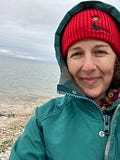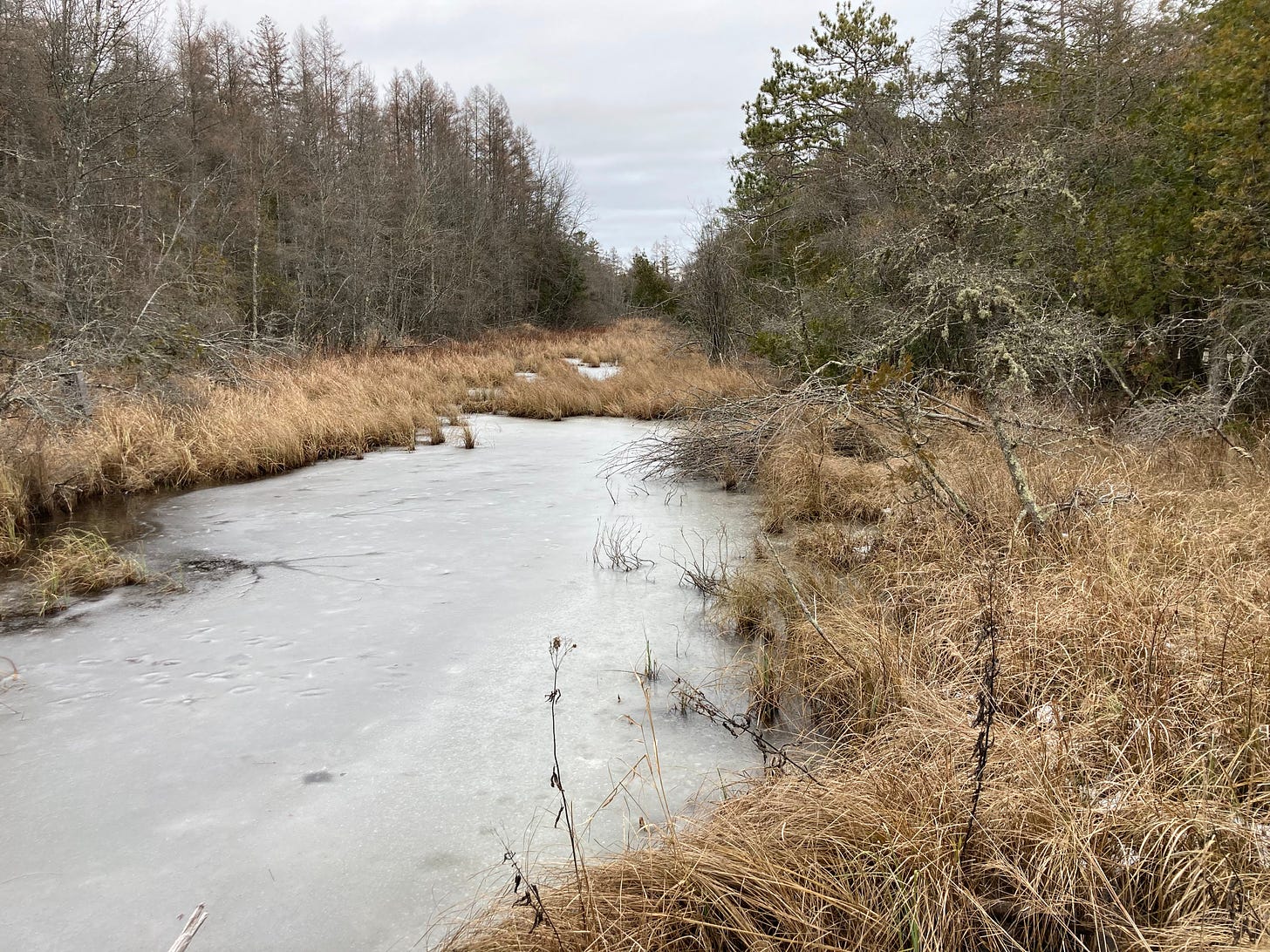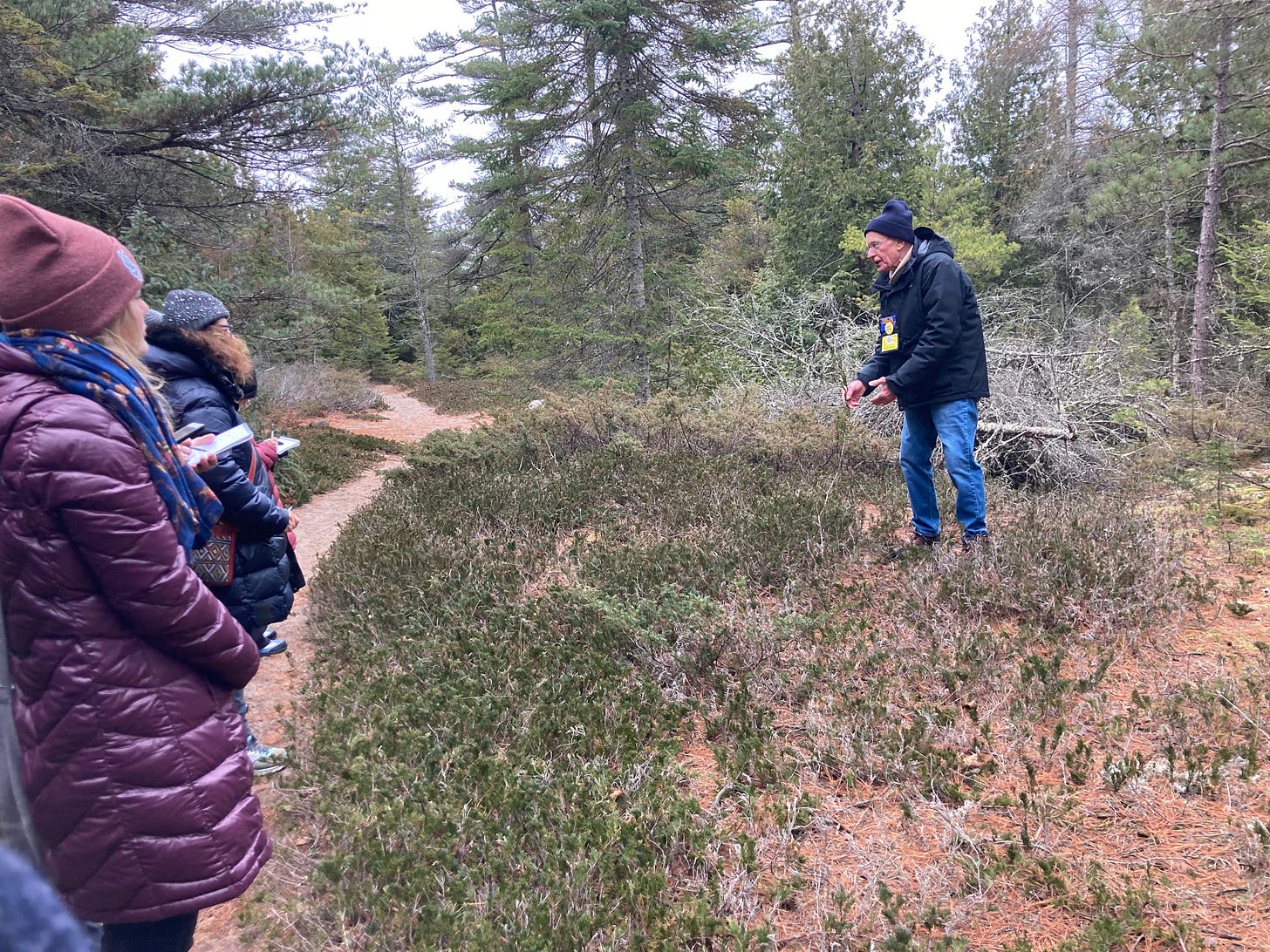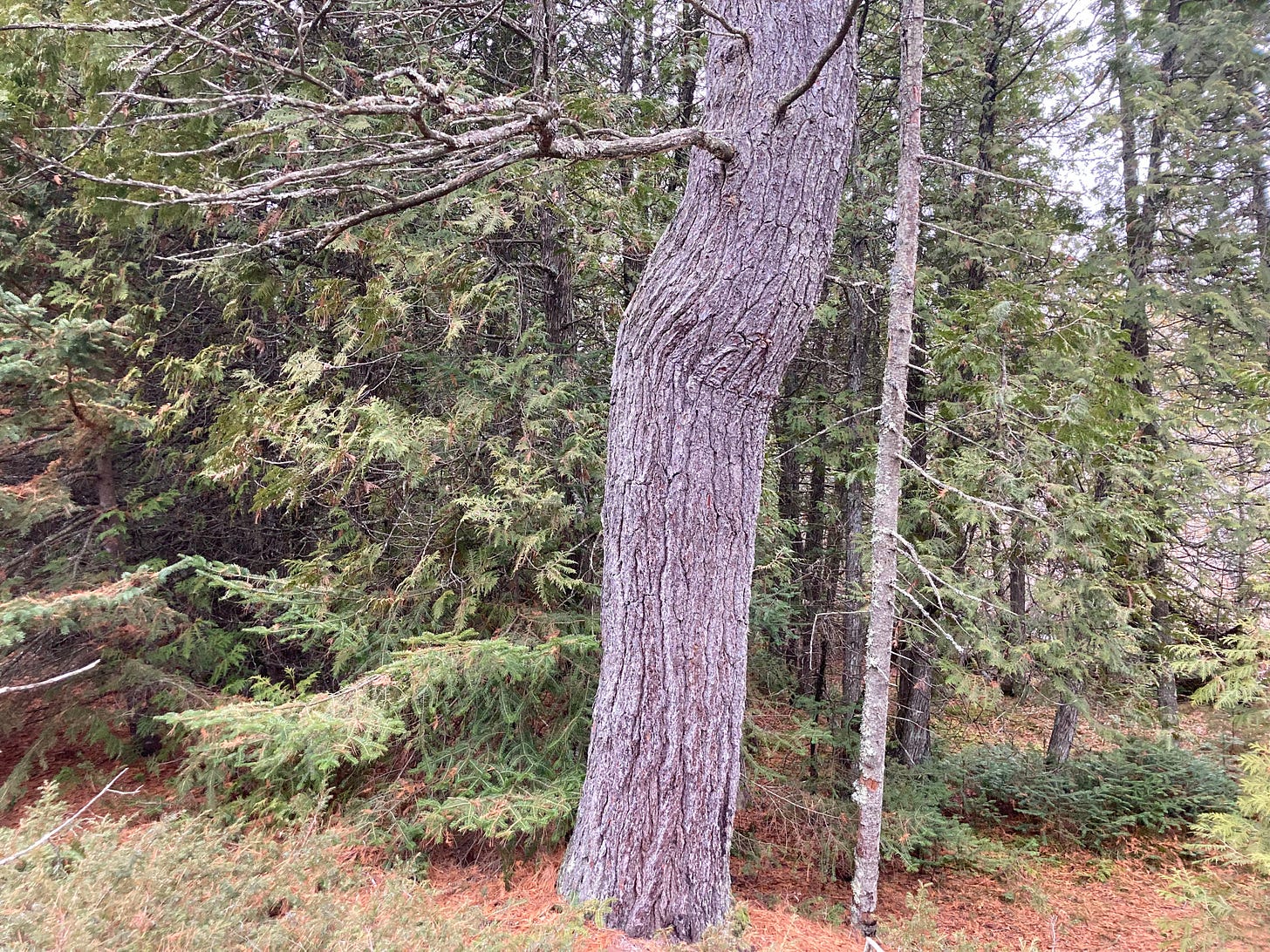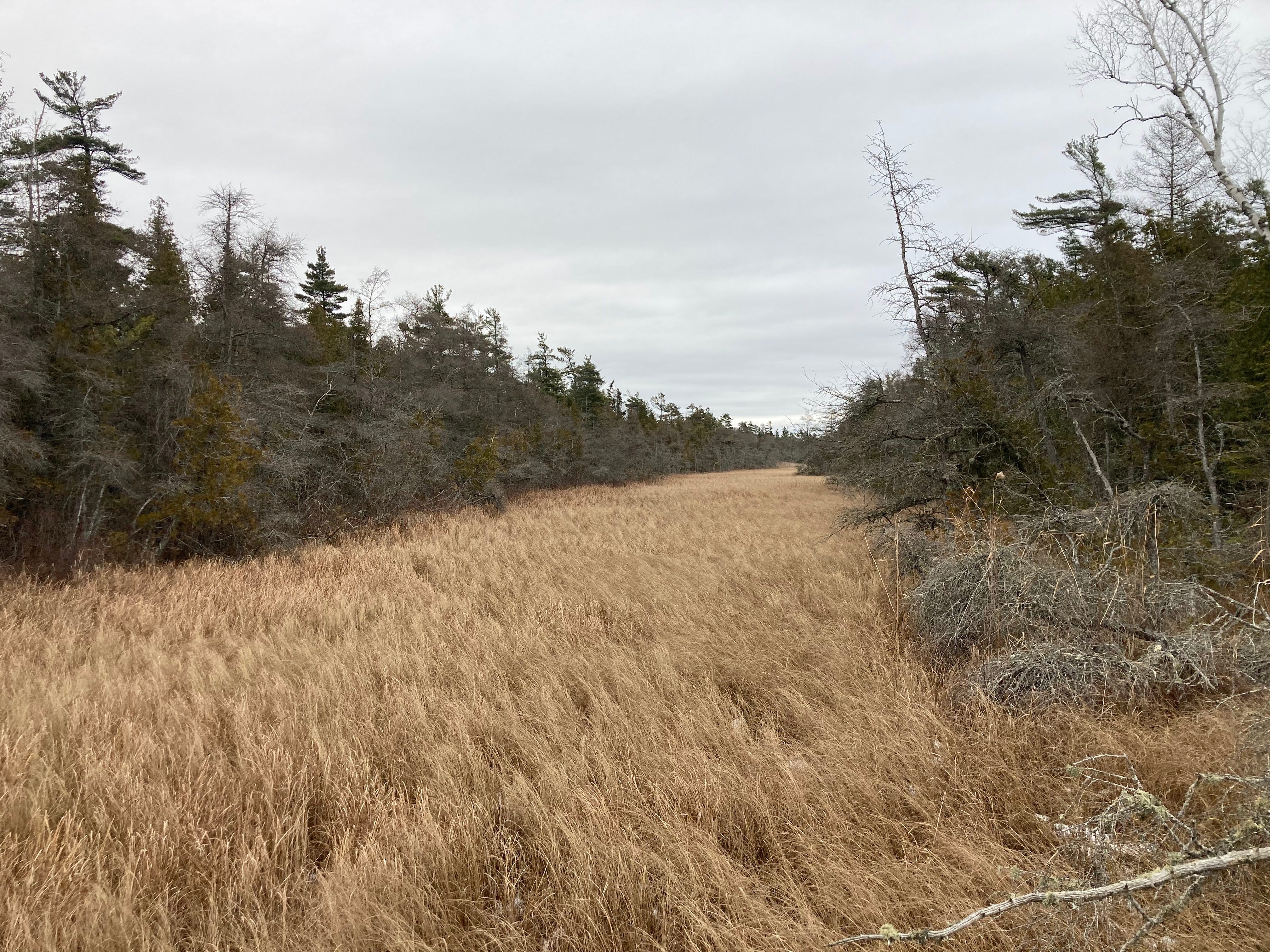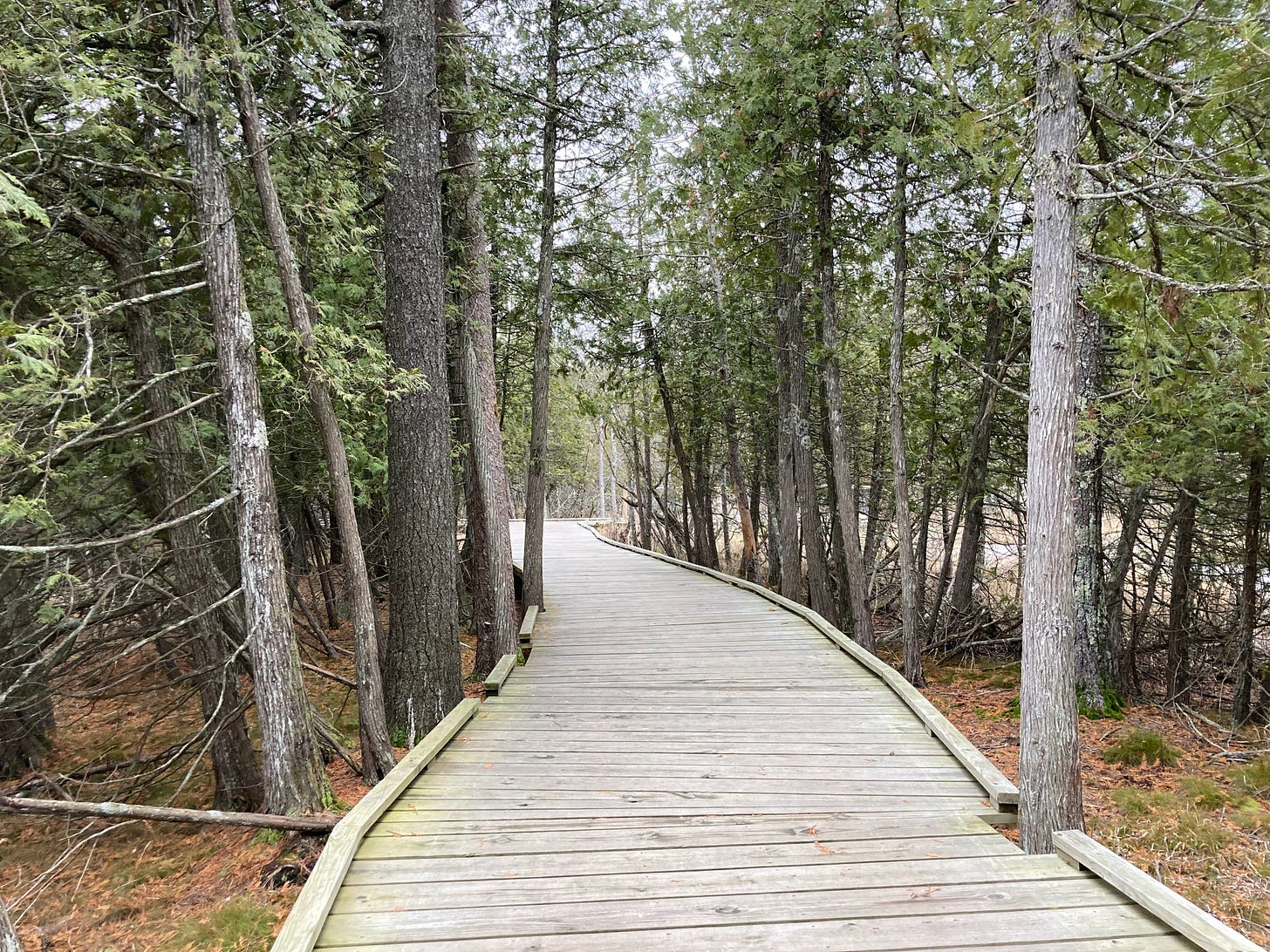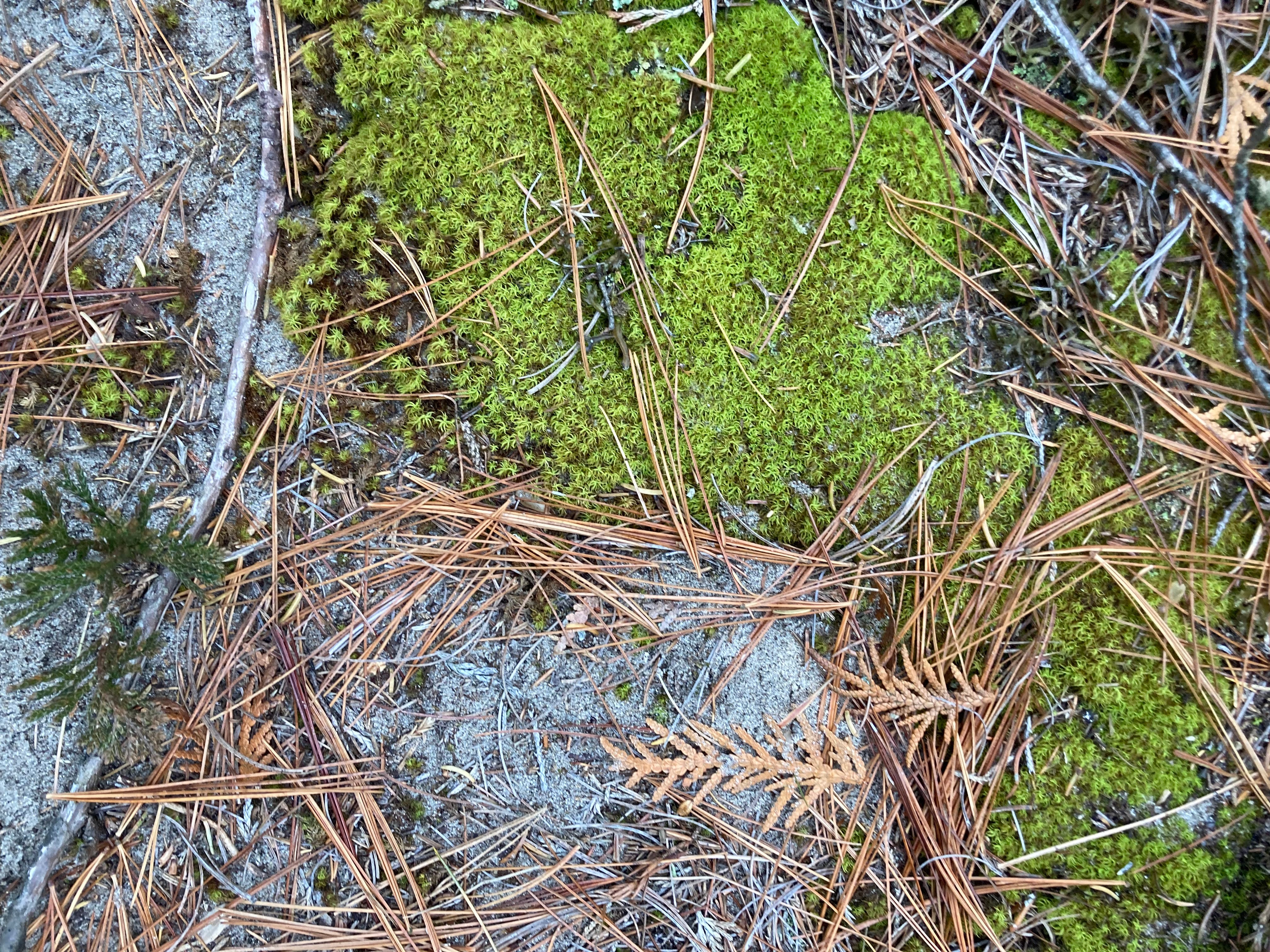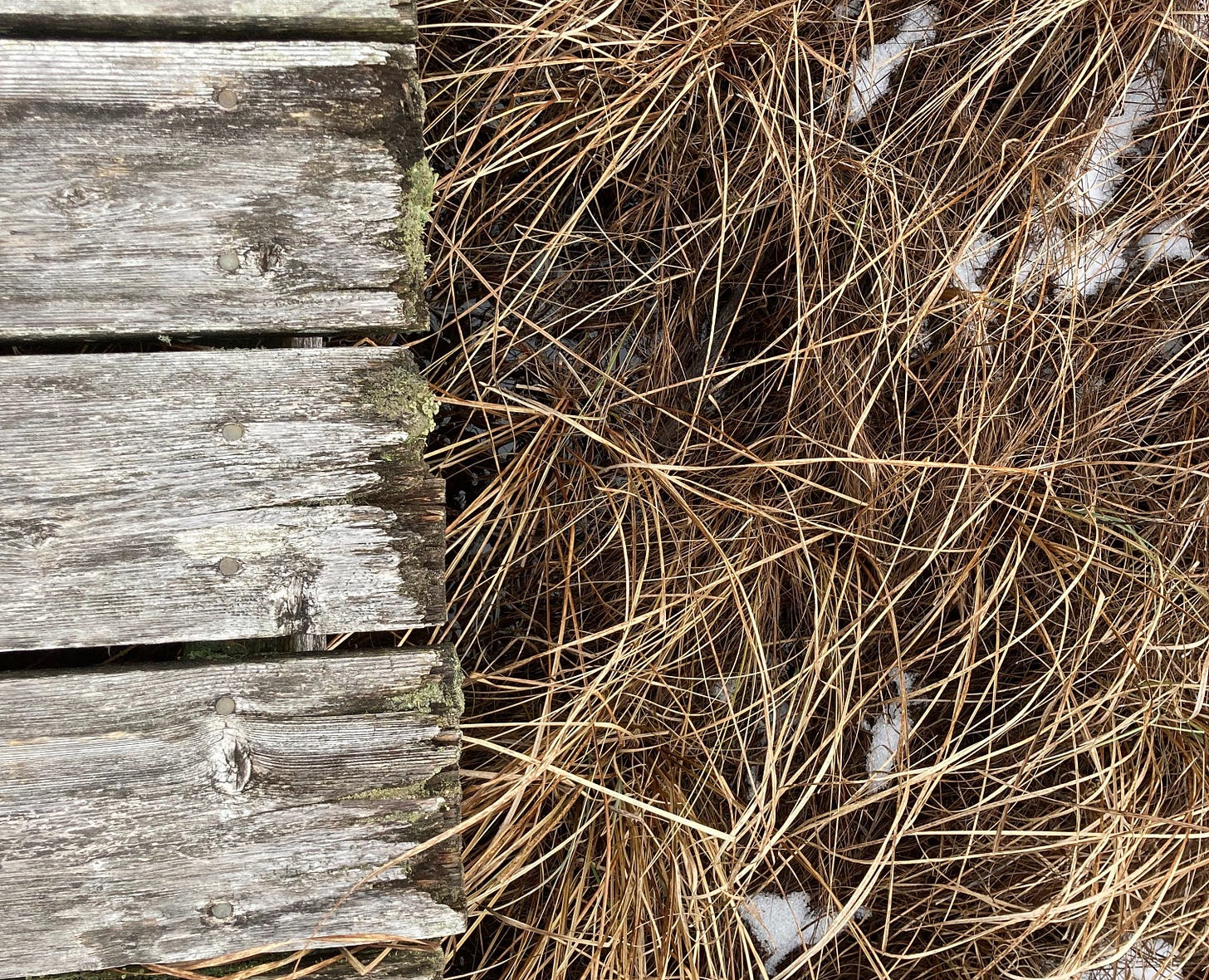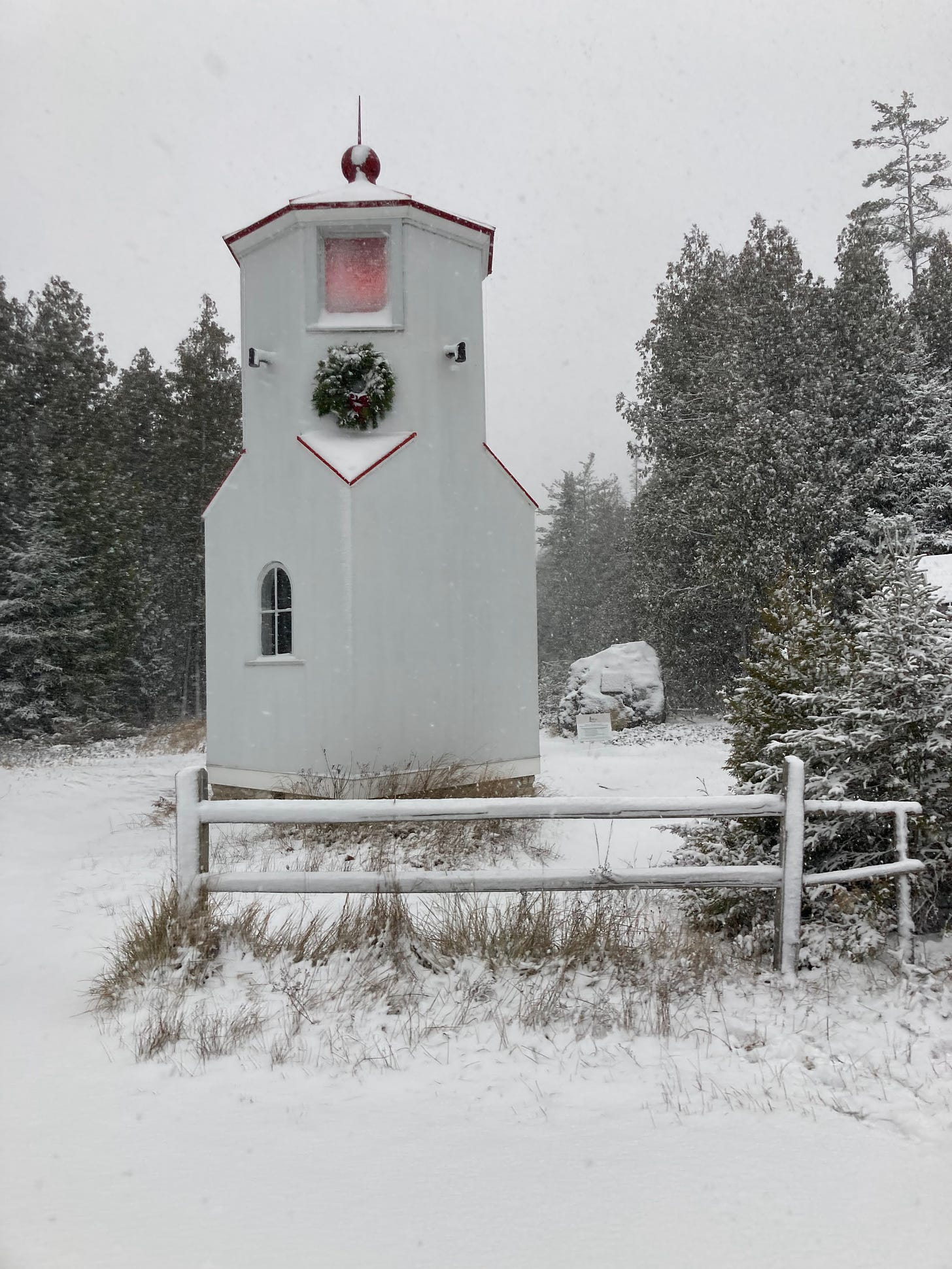A wintertime transformation in Door County
Lake Michigan continues to shape Wisconsin's northern peninsula, and so do volunteers like Bill Wolff.
Happy holidays, Feminist Kitchen readers! I have been busy finishing up some freelance projects, pitching some new ones and squeezing in a last-minute media trip to Wisconsin last weekend.
A little background on this adventure, which will lead to the first story I wanted to share from it, about a Ridges Sanctuary volunteer named Bill.
First, the background: Because of traditional journalism ethics, I couldn’t take press trips like this one when I was in an old school journalism job. The entire travel industry is built around marketing strategies that include covering the costs of writers’ trips to places their news outlets won’t pay for them to go.
Free trips are a controversial topic among writers and reporters, and here’s where I land: Music, theater and arts writers don’t pay for tickets, wristbands or other “access to news” costs. The ethical standard for restaurant critics is to pay for the food and then get a reimbursement from the media outlet, but travel writers have access to very little reimbursement money, if any.
This trip was a great example of the organizers setting up experiences and introductions that can lead to future stories, but they don’t require an assignment before you go. There are instances where it feels more “pay to play,” but I think both writers and hospitality PR folks realize that the media and travel industries are shifting and we have to shift with them.
A perfect example of this is something I started writing after we went to the Ridges Sanctuary, a nature preserve in Baileys Harbor, which is on the Lake Michigan side of the peninsula.
Is it a story that will make you want to travel there? Maybe. Is it a story about getting older and being in touch with nature that might resonate with you in some deeper way? I hope so.
The name of the sanctuary comes from the former shorelines of the lake that caused swales, or wetland ridges, all along the former coastline.
We had this incredible guide, Bill Wolff, who was really the star of the show. He is a retired swim coach and PE teacher who came to the Door, as it is called, 16 years ago. His wife wanted him to find something to do, so he found the sanctuary and got hooked.
As we walked, he pointing out the differences between the upright juniper and the creeping juniper (spiky and soft, respectively), the red pine and the white (two needles and five, respectively). He told us about the nature of the place, the animals, the lighthouses, the boardwalks that he helped build.
He pointed out a tree that was had a crooked trunk, a bend just sharp enough that loggers more than a century ago would noticed and skipped cutting down this tree.
“We call these trees the survivors,” Bill said. Its flaw is what saved it and kept it alive.
Bill warned of climate changes that were evident first in this liminal place. More than 20 species of orchids grow here, and they are the canaries in the coal mine for any changes to the water level, temperature or air quality.
“We are a great laboratory to find out what will happen with climate change,” he said. “Nature will provide for every species it will even provide for us if we don’t push it too hard.”
He showed us where the ridges open up, revealing “a golden hallway,” a long, narrow field, too soggy for any trees to take root.
“This is how we can measure the changes to the shoreline over time,” Bill said, pointing toward the lake. “Where the first lighthouse and road are is where the shore was 80 years ago, then 150 along this trail and 300 years back at the other lighthouse. A mile inland, that’s where the shore was 2,000 years ago.”
Just like rings of a tree.
He pointed out the newly built boardwalk that we walked on through this 1,600-acre property in the southernmost boreal forest in North America. It was entirely built by volunteers like him who cleared the trees by hand, in some cases building around those survivor trees.
“Us retired folks need something to do to keep our spirits up,” he said. He’s at the sanctuary almost every day, giving tours, answering questions from visitors or helping out with projects, like an orchid re-seeding program that recently caught the attention of the Smithsonian.
Protecting and promoting this place has given him a new passion for life, he revealed.
“This is a great place for transformation, within yourself and your community,” he said. “Everyone deserves the opportunity to see this.”
______________________________________________________
Is that the kind of story the Door County folks thought I’d write after that visit? I’m not sure, but just wait until I share the stories I’m working on about crying over coffee cake and the historic quilt I discovered in the lighthouse. :)
As always, thanks for your support on Substack! I wanted to share this post for free to everyone, and if you want to upgrade to the paid version, you’ll get to see the rest of the stories in this little Wisconsin series.
Thanks to your subscriptions, I can write about these little and not-so-little moments that I encounter during my travels or during my day-to-day life in Austin. If you’ve enjoyed reading on this platform this year, consider giving access to The Feminist Kitchen as a gift to someone who might enjoy it. Substack is still new to lots of folks, so I’m offering a deal on gift subscriptions through Dec. 31.
Happy Friday, and look for that coffee cake story on Monday morning!

